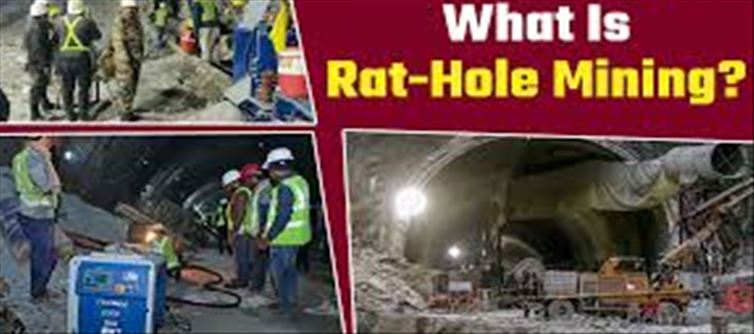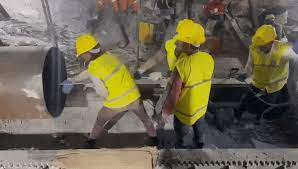
Uttarkashi tunnel rescue operations: What is rat mining?

In order to rescue the forty-one trapped workers from the collapsed Silkyara tunnel, pipes have been installed in the last section of the tunnel after a seventeen-day adventure. When the trapped workers are extracted, hospital beds, ambulances, and garlands are ready. On Tuesday, rescue personnel used a drill to cut through a 60-meter section of the Silkyara tunnel's debris. Personnel from the National Disaster Response Force (NDRF) were supposed to bring out the workers one by one after entering the steel chute that had been forced into the drilled passage over the course of several days.
Following the drill, each worker will lie down on a wheeled stretcher that will be dragged outside by rescue personnel on ropes. It was anticipated that this would require two or three hours. The final part of the rescue operation was carried out by "rat miners," who successfully finished the drilling process, clearing all debris so that the pipelines could be laid and the trapped workers could exit the collapsed tunnel. This came about after multiple delays caused by the US auger machine breaking down.
What exactly is rat mining?
Rat-hole mining is a type of manual drilling that is most popular in meghalaya and is done by skilled labourers. One person can often fit into a narrow pit that has been dug into the ground.
The phrase "rat hole" describes the small, naturally formed holes that are usually only deep enough for one person to descend and retrieve coal.
The miner uses bamboo ladders and a rope to descend into the holes after excavating them. This is a very dangerous method that is typically used to extract coal. Due to the rising number of cases of asphyxiation, oxygen deprivation, and hunger among miners, it is prohibited in many countries.




 click and follow Indiaherald WhatsApp channel
click and follow Indiaherald WhatsApp channel